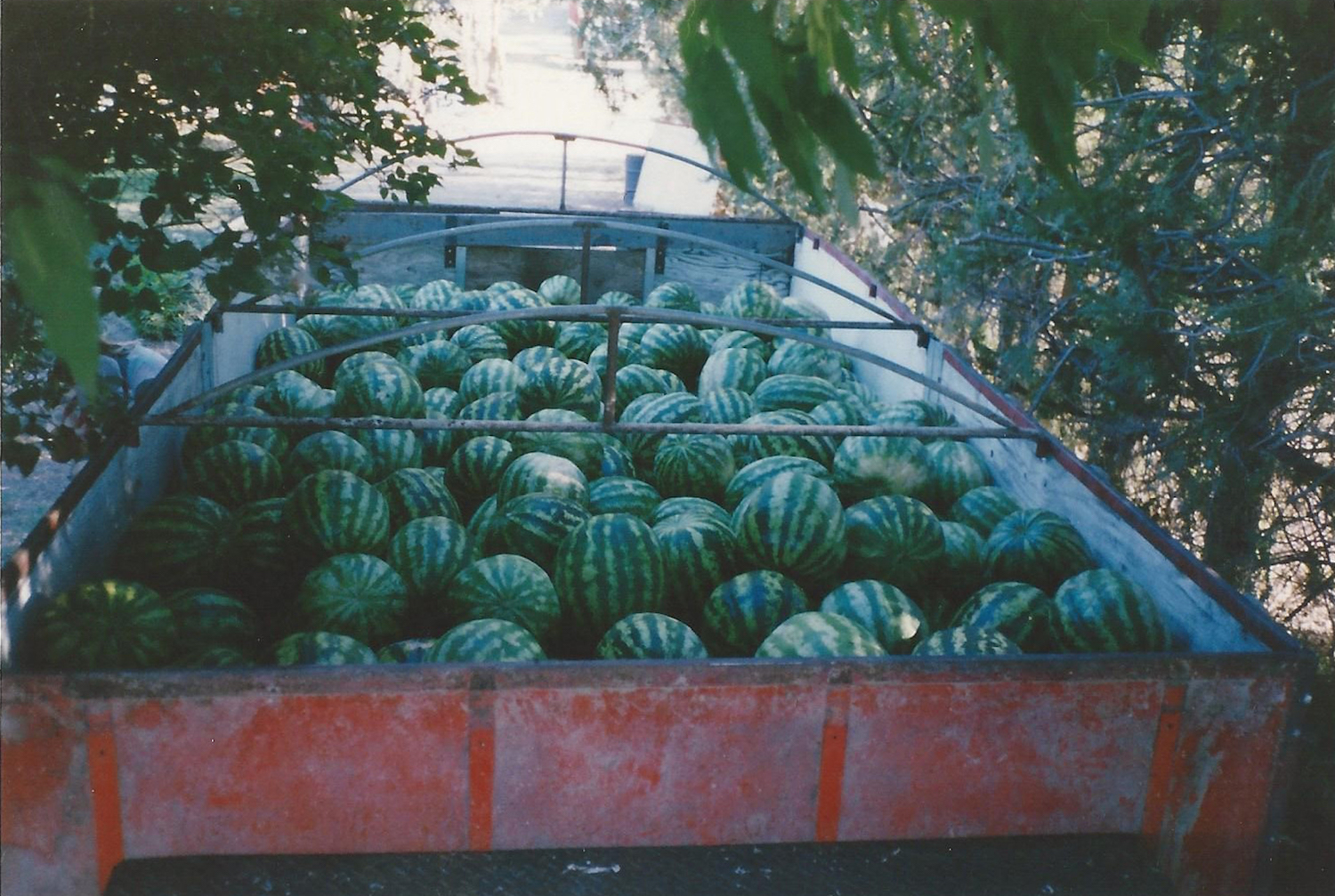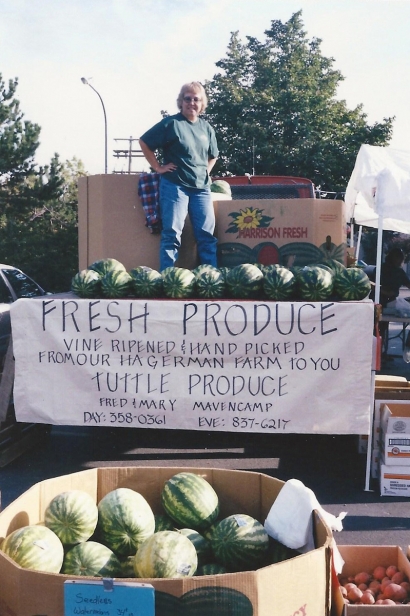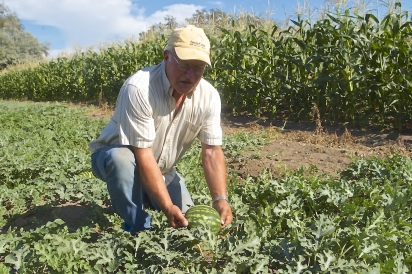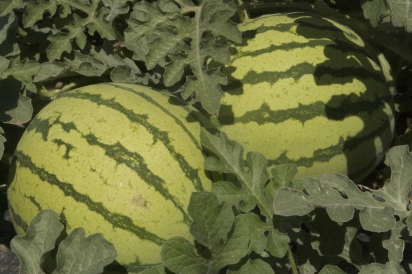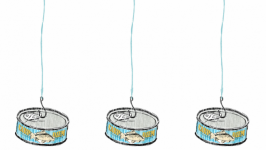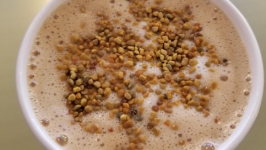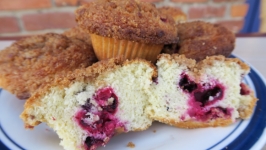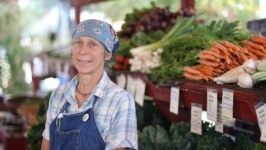Melons from Hagerman to Hammett: A Fruitful History of Highway 30
When the heat of mid-summer hits Hagerman, roadside melon stands pop up on State Street and on farms, and people flock into town to get their hands on watermelons and cantaloupe.
Fred and Mary Mavencamp of Tuttle Produce say that melons are so hard to come by now, that a train of vehicles follow their truck to market.
But it wasn’t long ago that Hagerman was bursting with melons. The Boyer family, probably the most well-known of the melon growers, used to cultivate 40 acres of melons. Now Ron Boyer, the last in his family to grow melons, raises only a few rows of watermelons for family and friends.
The Hagerman area is called “Melon Valley.” Some say the nickname came from the “melon rocks”—basalt deposits from the Lake Bonneville flood 15,000 years ago, which are scattered over the valley. But recent generations swear the name comes from watermelons.
Emerson Boyer was born in Hagerman in 1895. He was the first of the Boyers to grow melons in the valley. In 1925 he planted his first crop—40 acres of mostly Kleckley’s Sweet watermelon.
In 1961, Boyer’s grandson Ron joined the family business. Boyer & Sons employed grandparents, parents, aunts, uncles, and brothers. They planted, raised, picked, and hauled melons to grocery stores all over Southern Idaho, Nevada and Utah.
“It was a good cash crop in those days,” Ron Boyer said. His family used gravity and drip irrigation. They never sprayed their melons and never raised a crop on the same ground two years in a row due to blight potential. The Boyer family rented three- to four-acre plots all over the valley, and they waited 10 years to grow on the same section again.
“We knew about everybody’s soil quality,” Boyer said. The sandy, volcanic soil and hot, dry microclimate of Hagerman Valley provides ideal conditions for growing melons.
Just northwest on Highway 30, the township of King Hill has a similar microclimate and terrain. King Hill was also the home of Boyers’ biggest competitor, Wes Fink. The two families competed for grocery stores and pricing. But now the Finks are gone, and so are their melons. Nate Jones, the “melon man” of King’s Crown Organics, said he has a “sneaking suspicion” King Hill melons came first.
Jones guided us on a historical melon tour past Wes Fink’s old farm, which is no longer in the family and shows no signs of melons. We learned early local farmers hauled wagonloads of melons over the hills to sell to miners in Featherville and Atlanta. The route was dubbed “The Watermelon Wagon Trail,” Jones said.
The Oasis Ranch Hotel on Highway 30 in Hammett was a favorite stop for travelers to buy watermelon by the slice, but it’s now closed. An old sign announcing “petrified melons” seemed hauntingly accurate.
Jones, who started growing melons at King’s Crown in 1987, is growing three varieties of watermelon this year in Hammett, including Tiger Baby, a seven to 10 pound “perfect melon,” and the honeydewlike, unbelievably sweet Galia melon. He said he may be the only farmer to increase his melon acreage in quite some time to account for lost production as farmers continue to retire. Ron Boyer, who farmed 40 acres of melons at the peak of his business, retired last year at 71 years old.
The Mavencamps, on the other hand, have reduced their production from 15 acres to three. “It’s just too hard to find labor and even harder to find ground,” said Fred Mavencamp. Most of the small farming parcels are houses now.
In Hagerman, most of the other well-known melon growers have passed on, such as the Mrs. Joe Gerber, who grew a small garden of melons and ran her stand on the north side of town, and Dan McFadden, who sold melons out of the barn on his 200-acre farm.
With most of the melon farmers gone or retired, and the scale of melon farms reduced, it’s no wonder these juicy melons are in high demand. You can still find Mavencamp’s and Jones’ melons at local roadside stands, a few farmers markets and some stores. Frank Erwin still sells a handful at his self-serve stand. A few others, including the Bead brothers, Hagerman Valley Farms and Bill Ruffing are producing small crops.
Supporting these farmers helps uphold the history of Melon Valley, where cantaloupes are succulent and watermelon is king.


